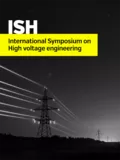Summary
The efficiency of various industrial applications is strongly depended on the features of the high voltage power supply employed. For instance, material processing by dielectric-barrier discharges involves power supply units able to deliver voltages of well-defined waveforms with amplitude of tens of kV and, usually, in frequencies much higher than 50/60 Hz. Following this concept, the present work is devoted to the design and implementation of a programmable power supply generating sinusoidal high voltages up to 30 kV peak-to-peak with fixed frequency at 10 kHz, while the total harmonic distortion is kept low (<1% on resistive load). Although the output stage of the power supply (step-up transformer) is rated at 50 mA rms on purely resistive load, it is dimensioned to provide successive impulses of current in the range of 1 A, like those appeared in filamentary or glow dielectric-barrier discharges. In principle, a wave function generator produces a basic sinusoidal signal, due to direct digital synthesis, which is processed/modulated and then guided to a power audio amplifier, driving eventually the primary winding of a step-up transformer. All these units are integrated to form a compact device. The power supply function is scheduled by the “dsPIC33EP128GP504” micro-processor with embedded code, providing thus high flexibility and accuracy in operation. Friendly to user interface is monitored on a liquid crystal display and allows: i) variation of the high voltage amplitude, ii) select of continuous-wave mode operation, and iii) select of burst mode operation with adjustable duty cycle (i.e. it may provide packets of high voltage sinuous). The latter feature is of high importance in industrial plasma applications where reactive species (e.g. metastable) densities must be controlled. Last but not least, the power supply is readily scalable to higher voltage outputs, by modifying only the output stage of the unit while the main electronic circuitry remains the same (including the audio amplifier). Interlocks for safe use and outputs for triggering/synchronization of/with external devices (e.g. CCD cameras), are also available on the unit. The entire power supply is placed in metallic enclosure for shielding. The power supply is successfully tested on an atmospheric-pressure cold plasma reactor.
Additional informations
| Publication type | ISH Collection |
|---|---|
| Reference | ISH2017_228 |
| Publication year | |
| Publisher | ISH |
| File size | 710 KB |
| Pages number | 6 |
| Price for non member | Free |
| Price for member | Free |



